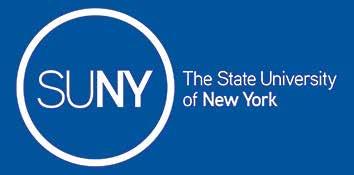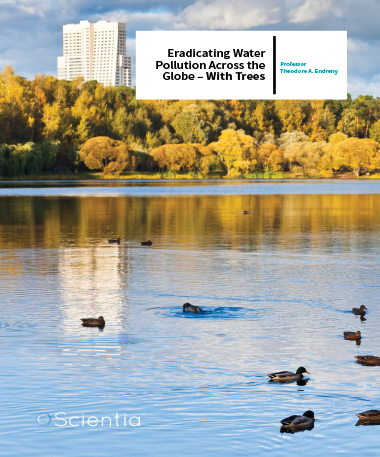Professor Theodore A. Endreny – Eradicating Water Pollution Across The Globe – With Trees
Environmental engineer Professor Theodore Endreny and his colleagues at the College of Environmental Science & Forestry of the State University of New York want to improve the world by devising ways to make our waterways safe for swimming, fishing and drinking, using trees!

How Much of the World’s Water Can We Actually Use?
As every school child learns, three-quarters of the Earth is covered with water, but 96.5% of it is held in our oceans. We can swim in it and fish in it, but we can’t drink it – it’s salt water. Even so, some of it is too polluted even to swim or fish in. The freshwater we need to drink – only 3.5% of the Earth’s total water – is largely tied up in glaciers, the polar ice caps and permanent snow, as well as the water vapour in the atmosphere, ground water and soil water that are not easily accessible. What we’re left with is the water in freshwater rivers and lakes, a measly 0.00001% of the Earth’s water. But the Earth’s animals and plants contain about a quarter of this amount, and as we use that water to live it must be replenished. If water we suck out of the lakes and rivers isn’t replaced without pollution, we have no place to get our water. Clearly humans – and all animal and plant life – are intimately connected to the Earth’s water supply for life itself. It is this precious, life-sustaining commodity that Professor Theodore Endreny and his colleagues in Environmental Resources Engineering want to protect and preserve. And to do that, they talk about the trees.
Keeping the Water Clean by Using Trees as Living Filters
It is estimated that half of the world’s hospital beds are occupied by patients suffering from disease attributable to contaminated or polluted water. In poor countries, unsafe drinking water leads to diarrhoeal diseases, such as cholera. The World Health Organization estimates that 88% of cases of diarrhoea globally result from unsafe water supplies, while the United Nations estimates that 10% of the world’s disease burden could be reduced with improvements in water quality, such as through sanitation, hygiene and management of critical water resources. This is clearly an important and global problem, the costs of which can reach into the trillions of dollars. And besides the health implications, the economic issues related to polluted and limited water supplies cost money, too. It is estimated that in the United States alone that water pollution by nitrogen and phosphorus costs the government, water purification facilities and individuals at least $4.3 billion USD annually. The social, economic, and environmental impacts of water pollution are huge. So how do our water supplies get so polluted? According to Professor Endreny: ‘non-point source runoff of nutrients from agriculture and urban areas has impaired waterways, keeping them from being swimmable, fishable, and drinkable.’
In other words, most water pollution isn’t from just a single point source of contamination, like a contaminated well or leaky sewerage pipe. Water pollution is caused overwhelmingly by general runoff of water from inhabited areas, bringing with it human contamination, such as sewage and chemical products. In agricultural areas, its brings contamination from livestock and agricultural material, such as fertiliser and decomposing crops. In addition, pollutants emitted into the atmosphere return to earth by gravity and also dissolved in rain, adding to the contaminants that runoff into the river system. These materials are often highly nutritious for bacteria and other causes of human disease. Runoff from such areas provides nitrates and other nutritive substances that enable massive bacterial and algal growths in rivers and lakes, to the detriment of the fish and natural wildlife there, as well as making the water unsafe to drink or even swim in. To clean up our rivers and lakes, we need to clean up the runoff water before it gets to the rivers and lakes. That’s where Professor Endreny wants to use Mother Nature to fix Mother Nature. Besides studying traditional ways to combat pollution, such as by restructuring the current and often out-dated and overloaded pollution treatment systems, he wants to plant trees so clean up our water.
‘Our team builds models to find the origin and map the flow path of these pollutants, and identifies areas were trees could be planted to filter and clean the polluted water before it reaches our rivers, lakes, and oceans’
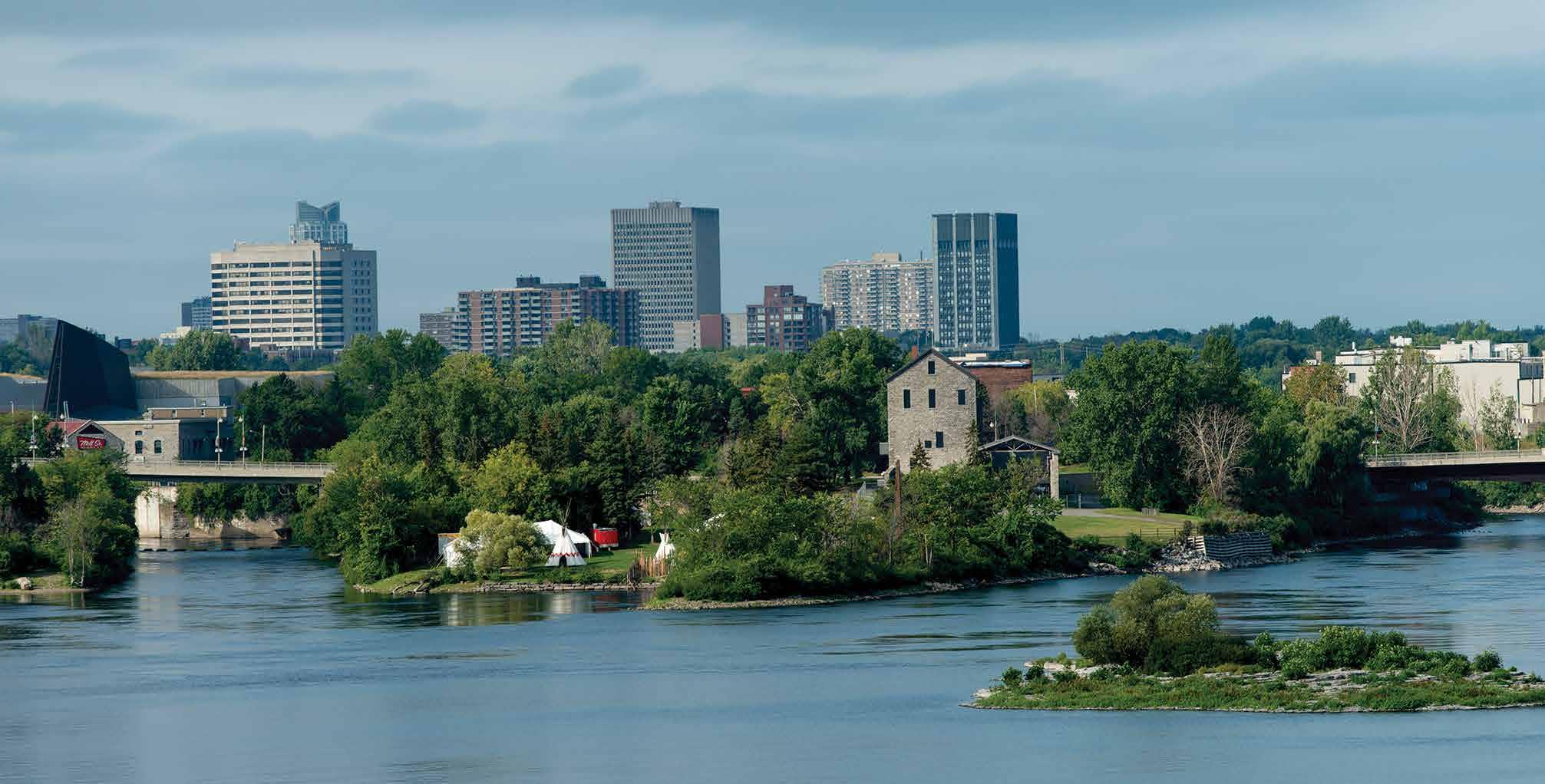
Landscaping – Connecting Humans to Nature
To environmental engineers, landscaping is connecting the built and natural environment towards a specific purpose, usually the improvement of the environment or a solution to some human problem related to nature. For example, if a town or city in an arid environment is plagued by flash flooding during the rainy season, the area may be landscaped by environmental scientists to provide canals and runoff reservoirs to channel floodwaters away from houses and businesses and green areas to absorb sudden rainfall. In agricultural areas with cyclic rainy and dry seasons, canals can be designed to provide water from adjacent areas to ensure consistent crop and livestock watering. In any case, modifying the landscape of an area is more than just making it pleasant on the senses – it can result in striking and long-range effects on environmental quality and human wellbeing.
Early in his training, Professor Endreny saw that landscapes could be better managed to allow for agriculture and urban development, as well as functioning waterways. ‘I saw a chance to advance research and management on this problem by using new remote sensing products and computer hydrology model routines to identify and track the likelihood for pollution to enter receiving waters, and thereby guide planners toward better landscape management,’ he explains. In 2002, he published a paper discussing the use of forest buffer strips for trapping nonpoint-source pollutants and protecting surface water quality. At the time, there existed few models designed to identify key areas for buffer installation and management, so he presented a conceptual model of polluted runoff dynamics for estimating watershed-wide forest buffer needs. The model took into consideration elevation and land-cover maps, along with calculations that represented basic nutrient runoff principles. In other words, you can calculate the nitrogen and phosphorus waste runoff from a specific area and determine where to plant trees to denitrify the polluting runoff before it reaches waterways.
What Professor Endreny and his team currently do is build models of problem spots around the world to find the origin, and map the flow path of various pollutants in order to identify areas where trees could be planted to filter and clean the polluted water before it reaches nearby rivers, lakes and oceans. ‘The model uses proven yet simple scientific principles to describe the pollution flow path and the filtering process in order to balance accuracy and ease of use. It is our goal to create a model as the go-to tool for communities interested in participating in their land use planning,’ he explains. And one of the end products of these models is the planting of trees in strategic positions so that, for example, nitrogenous wastes can be absorbed from runoff before it reaches local bodies of water.
Megacities Mean Mega Benefits for Mankind – But We Cannot Forget the Environment
There are a number of theories about the origin of the British slang term for toilet – loo – but the most amusing for tourists is that it derived from the Anglicised shout of ‘gardyloo’ – from the French regardez l’eau or ‘watch out for the water’ – that was shouted by servants as they emptied chamber pots out of upstairs windows into the street. Whether this is the true etymology or not, it underscores a problem that arises when humans concentrate themselves in small areas, like cities. Fresh water and food has to come from somewhere, since there are usually no fresh creeks or farms in the midst of large cities, and waste has to go somewhere. In past centuries, throwing waste into streets was the norm, and history is replete with stories of plagues and epidemics and the subsequent rise of modern civil engineering, sewerage treatment and trash collection. But the lesson is obvious – the larger the city, the more problematic the disposal of waste and other pollutants. You can’t just throw everything in the streets if there are millions of people living in the city. This is where the concept of a megacity is important and right up Professor Endreny’s alley.
Megacities are defined as metropolitan areas with a population in excess of ten million people. These can a be single large city, like Shanghai, or metropolitan areas – so-called metroplexes or metropolises – where several smaller adjoining areas merge into one large confluence, like Tokyo. For Professor Endreny’s purposes, megacities are demographic epicentres in the production of livelihoods and market places. But because their populations are so large and so dense, their function – human wellbeing and livelihood – is jeopardised by pollution, climate change, and budget gaps limiting investments in education and healthcare. His research looks to quantify how existing and potential tree cover can lead to cleaner production, climate change mitigation and economic savings in these large population centres. He is interested not in, say, just New York or London, but in megacities across different continents and biomes. Different climates may mean different trees, but the science remains the same – use trees to absorb runoff pollutants before they reach the waterways and cause human problems.
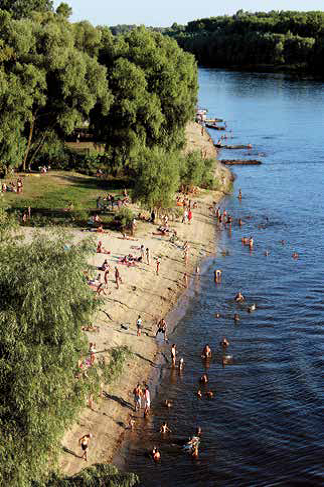 Looking at Trees and Megacities All Over the World
Looking at Trees and Megacities All Over the World
The team has looked at multiple megacities and calculated the effect that planting trees would have on the millions of people involved. In a presentation at the July 2016 conference of the World Summit of Environmental Accounting, Professor Endreny presented research that scientifically calculated planting of trees could potentially contribute billions of dollars to the sustainable production of livelihoods in the megacity ecosystems. He and his team used a software tool called i-Tree, available for free at www.itreetools.org. This is a suite of computer programs developed to help communities inventory their tree cover and estimate the associated ecosystem services related to that tree cover. The tools use input data of tree structure, air pollution, weather, buildings, and economic pricing to calculate estimates of the tree-based ecosystem services of air pollutant reduction, storm water runoff reduction, building energy savings and carbon emissions avoided, and sequestration of carbon dioxide.
Professor Endreny’s team used the i-Tree tools to survey ten cities: Beijing, China; Buenos Aires, Argentina; Cairo, Egypt; Istanbul, Turkey; London; Great Britain; Los Angeles, United States; Mexico City, Mexico; Moscow, Russia; Mumbai, India; and Tokyo, Japan. They chose these cities because they span five different biomes, based on their annual average rainfall, high and low average temperatures, and native vegetation density and characteristics. They input data collected from each city and calculated the area of tree coverage and the effect that coverage had on local environmental and economic factors. They found that the relative tree cover area of megacities was lowest in desert and Mediterranean biomes, such as Cairo and Istanbul, as expected. It was largest in Tokyo, also the largest city in area. Treebased ecosystem benefits came to a median value of $1.1 billion USD per year in total benefits, equivalent to $2.7 million square kilometres per year of tree coverage, or $76 USD per capita yearly for a megacity, and 0.3% of the megacity gross domestic product. Importantly, the team calculated that megacities can potentially increase these benefits by 85% by strategically increasing their tree cover. This could serve to better filter the city-generated pollutants and create a cleaner environment for human living and pursuit of human livelihoods.
Where is the Research Heading?
Looking to the future, Professor Endreny would like to improve upon his models to better predict locations with high denitrification potential in order to better predict the effects of intervention on filtering and removing nitrogen pollutants. He and his group intend to specifically map out urban flow paths within the micro-topography of city road systems so they can try to guide runoff into the green infrastructure, where the trees can do their work. If they can predict the build-up of nutrients and other pollutants in the landscape, they might be able to use alternatives of export coefficients and event mean concentrations as estimates of the pollutant load in any given area. Finally, they want to be able to incorporate future climate and land use predictions – how are the cities and farms going to expand – to simulate their effect on nutrients. Then they will be able to calculate where to plant trees now to manage the runoff in future. ‘Plant a tree, save the planet’ isn’t just about deforestation anymore. It’s about having a glass of clean water.
Meet the researcher
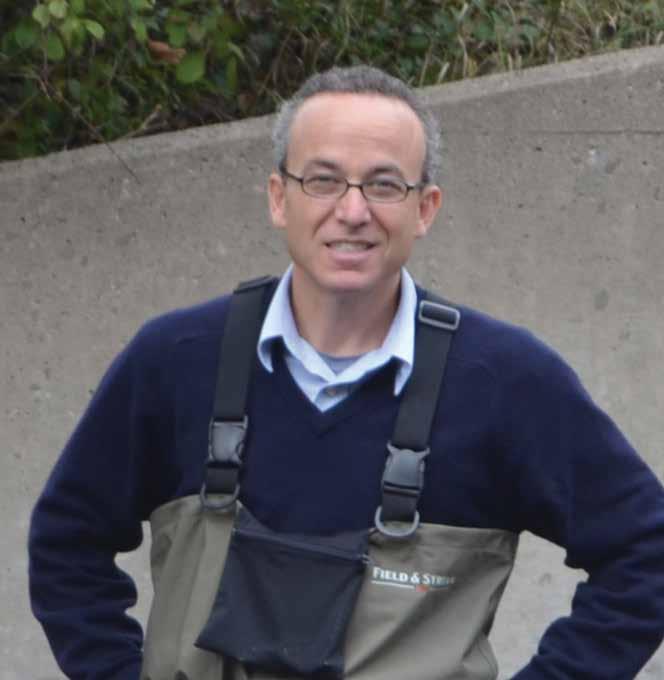
Professor Theodore A. Endreny
Professor and Chair – Environmental Resources Engineering
College of Environmental Science & Forestry
State University of New York
USA
Professor Theodore Endreny did his undergraduate studies at Cornell University in Ithaca, New York, in Natural Resources Management and received his B.S. in 1990, after which he served two years as a volunteer in the Peace Corps and Honduras Forest Service, and then worked 2 years as a research associate with the Environmental Law Institute in Washington, DC. He then earned an M.S. in Soil & Water Engineering in 1996 from North Carolina State University and a Ph.D. in 1999 in Water Resources Engineering from Princeton University in New Jersey. During his graduate training, he was funded by the US EPA Environmental Monitoring & Assessments Program and the NASA Graduate Students Research Project program. Professor Endreny joined the faculty of the SUNY College of Environmental Science & Forestry in 1999, where he is currently Professor and Chair for the Environmental Resources Engineering Department. He has authored or co-authored over 75 peer reviewed articles, reviews, and chapters, and more than 150 professional presentations. Endreny is a professional engineer licensed by the State of New York and a professional hydrologist licensed by the American Institute of Hydrology.
CONTACT
T: (+1) 315 470 6565
E: te@esf.edu
W: http://www.esf.edu/ere/endreny/
KEY COLLABORATORS
Reza Abdi, SUNY College of Environmental Science & Forestry
Emily Stephan, SUNY College of Environmental Science & Forestry
Dr Dave Nowak, USDA Forest Service
Dr Chuck Kroll, SUNY College of Environmental Science & Forestry
FUNDING
U.S. Department of Agriculture Forest Service
Mianus River Gorge Research Assistantship Programme
REFERENCES
EA Stephan and TA Endreny, Weighting Nitrogen and Phosphorus Pixel Pollutant Loads to Represent Runoff and Buffering Likelihoods, Journal of the American Water Resources Association, 2016, 52, 336–349.
TA Endreny, Forest Buffer Strips: Mapping the Water Quality Benefits, Journal of Forestry, January/February 2002, 35–40.
